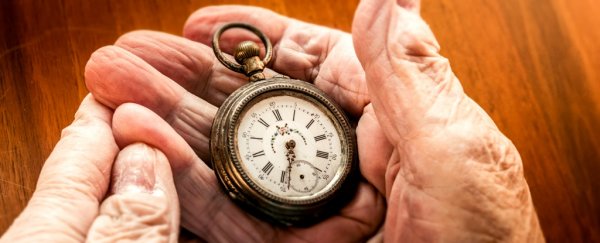The appearance of wrinkled, weathered skin and the disappearance of hair are two of the regrettable hallmarks of getting older, but new research suggests these physical manifestations of ageing might not be permanent – and can potentially be reversed.
New experiments with mice show that by treating a mutation-based imbalance in mitochondrial function, animals that looked physically aged regrew hair and lost their wrinkles – restoring them to a healthy, youthful appearance in just weeks.
"To our knowledge, this observation is unprecedented," says geneticist Keshav Singh from the University of Alabama at Birmingham.
One of the focal points of anti-ageing research is investigating the so-called mitochondrial theory of ageing, which posits that mutations in the DNA of our mitochondria – the 'powerhouse of the cell' – contribute over time to defects in these organelles, giving rise to ageing itself, associated chronic diseases, and other human pathologies.
 Normal mice; after two months of mtDNA depletion; recovered mouse one month later (UAB)
Normal mice; after two months of mtDNA depletion; recovered mouse one month later (UAB)
To investigate these mechanisms, Singh and fellow researchers genetically modified mice to have depleted mitochondrial DNA (mtDNA).
They did this by adding the antibiotic doxycycline to the food and drinking water of transgenic mice. This turned on a mutation which causes mitochondrial dysfunction and depletes their healthy levels of mtDNA.
In the space of eight weeks, the previously healthy mice developed numerous physical changes reminiscent of natural ageing: greying and significantly thinning hair, wrinkled skin, along with slowed movements and lethargy.
The depleted mice also showed an increased numbers of skin cells, contributing to an abnormal thickening of the outer layer of their skin, in addition to dysfunctional hair follicles, and an imbalance between enzymes and inhibitors that usually prevents collagen fibres from wrinkling skin.
But once the doxycycline was no longer fed to the animals, and their mitochondria could get back to doing what they do best, the mice regained their healthy, youthful appearance within just four weeks.
Effectively, they reverted to the animals they were before their mitochondrial DNA content was tampered with – which could mean mitochondria are reversible regulators of skin ageing and hair loss.
"It suggests that epigenetic mechanisms underlying mitochondria-to-nucleus cross-talk must play an important role in the restoration of normal skin and hair phenotype," says Singh.
"Further experiments are required to determine whether phenotypic changes in other organs can also be reversed to wildtype level by restoration of mitochondrial DNA."
Even though the mitochondrial depletion affected the entire animal, for the most part the induced mutation did not seem to greatly affect other organs – suggesting hair and skin tissue are most susceptible to the depletion.
But it could also mean the discovery here isn't the fountain of youth for slowing or reversing the wider physiological causes of ageing – only its more surface, cosmetic symptoms. Although, at least some in the scientific community aren't persuaded yet.
"While this is a clever proof of principle, I am not convinced of the clinical relevance of this," biologist Lindsay Wu, from the Laboratory for Ageing Research at the University of New South Wales, who was not involved in the study, told ScienceAlert.
"The rate of mitochondrial DNA mutations here is many orders of magnitude higher than the rate of mitochondrial DNA mutations observed during normal ageing."
"I would be really keen to see what happens when they turn down the rate of mutations to a lower level more relevant to normal ageing," Wu added.
In that vein – with further research, and assuming these effects can be replicated outside the bodies of mice, which isn't yet known – it's possible this could turn out to be a major discovery in the field.
For their part, at least, the researchers are convinced mtDNA mutations can teach us a lot more about how the clocks in our bodies might be stopped (or wound back to another time entirely).
"This mouse model should provide an unprecedented opportunity for the development of preventative and therapeutic drug development strategies to augment the mitochondrial functions for the treatment of ageing-associated skin and hair pathology," the authors write in their paper, "and other human diseases in which mitochondrial dysfunction plays a significant role."
The findings are reported in Cell Death and Disease.
